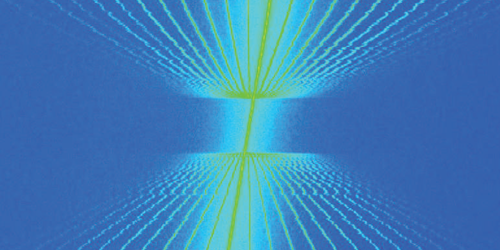Motion Synchronization Goes Long Distance
The ability to synchronize the motion of two oscillating objects has revolutionized technologies, such as clocks, that require precision measurements to operate. For long-distance coupling, researchers typically use electromechanical oscillators, whose motion is driven by electrical actuation and whose synchronization comes from either electronic coupling or a physical connection. Now Chun-Hua Dong of the University of Science and Technology of China and colleagues have demonstrated optical coupling of the motion of a swinging microsphere and of a vibrating microdisk separated by 5 km of optical fiber [1]. Dong says that, because of reduced losses for optical signals compared to electronic ones, the technique could enable more robust synchronization of objects separated by long distances.
The team fabricated a 38.7-µm-diameter silica sphere and a 41.76-µm-diameter silicon disk that oscillated at the same resonant frequency, then they connected the objects using 5 km of coiled optical fiber. To synchronize the motion of the objects, the team first set the sphere oscillating using the light pressure from a high-powered laser. After interacting with the sphere, the light was then guided along the optical fiber to the disk to set up a similar oscillation. Measurements of the motion of both objects indicated that their vibrations were in phase.
Dong notes that optical coupling of the motion of optomechanical oscillators has been achieved for oscillators in integrated circuits. But in those cases, the oscillators were separated by just a few micrometers, limiting the technique’s applications. He says that the increased distance achieved in his team’s experiment came from a more detailed understanding of optical synchronization of optomechanical systems and from a fine-tuning of the technique.
–Katherine Wright
Katherine Wright is the Deputy Editor of Physics Magazine.
References
- J. Li et al., “All-optical synchronization of remote optomechanical systems,” Phys. Rev. Lett. 129, 063605 (2022).




